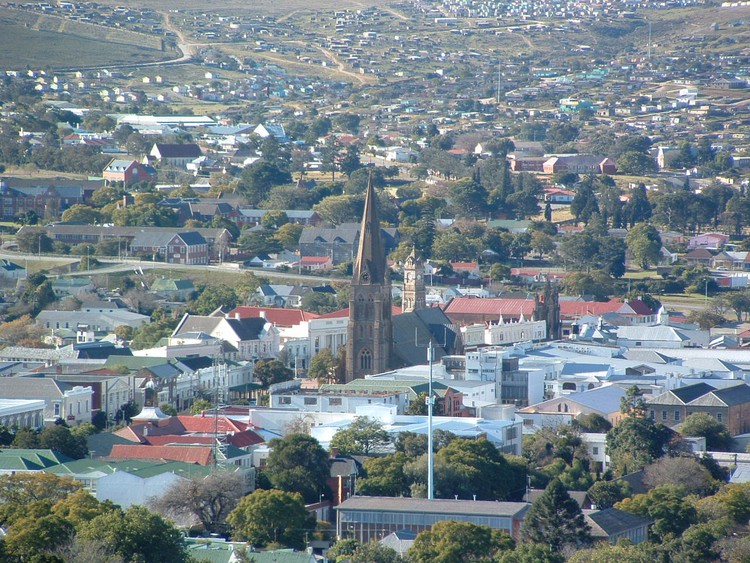Grahamstown’s water problems are under control
It is going to be a fantastic festival
Last week we described Grahamstown’s water problems. Ted Pillay, the Acting Municipal Manager for the Makana Municipality explains here how the town’s water supply works, and reassures the public, ahead of the National Arts Festival, that the water is clean.
Grahamstown (which is part of the Makana Municipality) is arguably one of the oldest towns in the country. In 2019, the 200th year of the Battle of Grahamstown will be commemorated. In 2020, the 200th anniversary of the town will be celebrated.
Grahamstown is the home of Rhodes University, one of the finest tertiary institutions in the country and home to three of the finest private schools. One of these schools is considered to be one of the top 20 schools in the world. Grahamstown is also called the city of saints boasting the most number of churches dating way back from the past. The seat of the High Court in the Eastern Cape is in Grahamstown. It is a city steeped in learning, history, tradition and culture. The gallant troops based at 6th SA Infantry in the city and who are part of South Africa’s peacekeeping efforts on the continent, exercised their freedom of the city last month.
It is also home to the National Arts Festival. This year will be the 44th edition. “We begin our annual journey to another exciting gathering to celebrate our living heritage and creative impulse as a society at the National Arts Festival,” says Jenny Pheiffer, Head of Brand Sponsorships and Events, Standard Bank.
Ayanda Mjekula, the chairperson of the National Arts Festival Board notes, “The festival takes place as we commemorate the centenary of the birth of Albertina Sisulu and Nelson Mandela. We commit this event to their memories and hope that it lives up to the ideals they espoused and two of the core freedoms they embraced: freedom of expression and freedom of speech”.
It may be the third largest or fourth largest arts festival in the world and annually festival lovers from many countries descend on Grahamstown and its surroundings (as far as East London, Port Elizabeth and Port Alfred).
Grahamstown’s water supply
There is little doubt that much of the water and sewer infrastructure has aged and needs to be upgraded. The town has seen a steady growth over the last number of years and the movement of people to Grahamstown to seek better opportunities is very real. So what is the municipality doing with the need to maintain and upgrade its infrastructure?
The water supply to Grahamstown is fed by two systems.
In the western part of the city (which embraces the city centre, the more affluent residential areas, Rhodes University etc), the supply comes from the Waainek water treatment works (WTW). This WTW can produce seven megalitres of water per day which is adequate for the current demands in the west. Notwithstanding that, the municipality is currently refurbishing this WTW to avoid water outages in the west which occur from time to time.
Raw water supply is the problem. The water availability in the west which comes primarily from the Settlers Dam is constrained (with its limited catchment area in the Thomas Baines Nature Reserve). Unless another water catchment area is identified, it is highly unlikely for this WTW to be upgraded significantly.
The big challenge is in the eastern part of Grahamstown. Raw water availability here is not the issue as water at the Glen Melville Dam (which is the main supply dam in the east) can be augmented with water from the Orange / Fish River schemes. The current reality is that the James Kleynhans WTW that must treat this raw water, can only produce ten megalitres per day. The demand in the eastern part of Grahamstown is at about 13 megalitres per day.
Has forward planning not been occurring to anticipate the increasing demand over the last couple of years? Could well be! And the town has grown (because of the movement of people into Grahamstown) and family numbers have also grown.
Currently another WTW (with a capacity to treat another ten megalitres of water per day is being constructed adjacent to the current WTW. Work commenced in 2016. This additional capacity therefore will be more than adequate to meet the current demand as well as the future growth in the east.
At this time the water supply in the east is cut every day at about 9pm and restored at about 4am. This allows the reservoirs to be filled overnight. Unfortunately, when the supply is restored in the morning, the first few litres of water are brown in colour as the sludge that settled in the reticulation lines is “pushed out”. The only way the water can be clear at all times, is when the water supply is at 24 hours a day without any disruption. The harsh reality is that this additional capacity will only come on line in 2020, when the construction of the new WTW is completed and the plant is commissioned. The Department of Water and Sanitation is funding the project and overseeing its construction.
The water quality is monitored on a weekly basis and the water is currently free from impurities.
Next: “This area is used as a dumpsite” says Mandela Park resident
Previous: Port Elizabeth municipal strike ends with agreement on bonuses
Letters
© 2018 GroundUp.
This article is licensed under a Creative Commons Attribution-NoDerivatives 4.0 International License.
You may republish this article, so long as you credit the authors and GroundUp, and do not change the text. Please include a link back to the original article.



